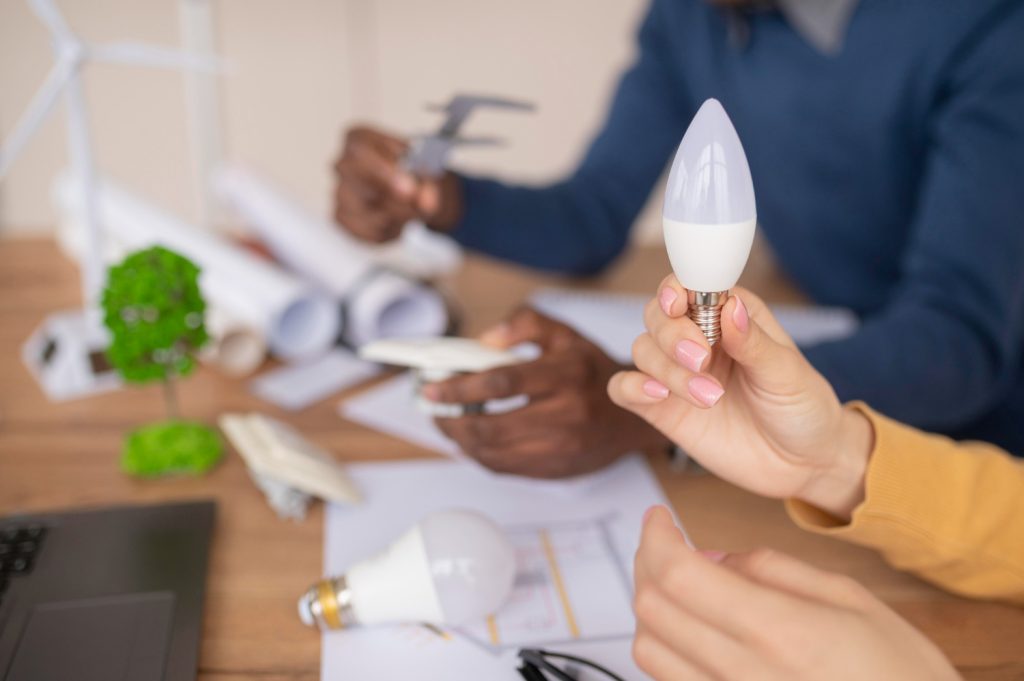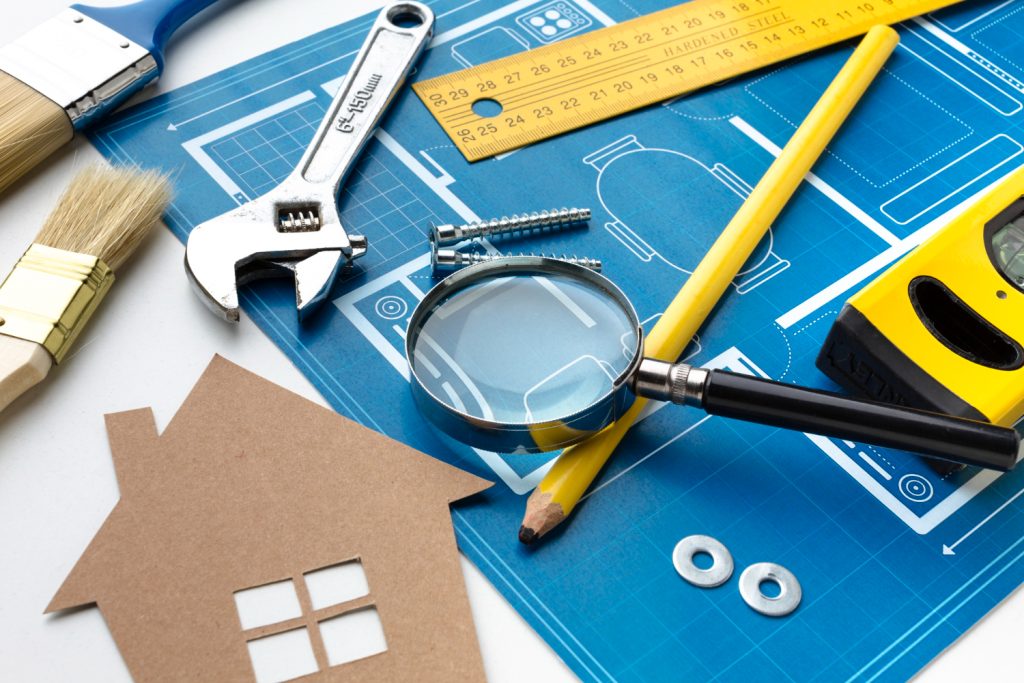About HomeBoost

HomeBoost has become a remarkably effective ally for homeowners who are trying to stay ahead of the curve in an era where household bills have increased more quickly than many can modify their budgets. This innovative solution turns an otherwise perplexing experience into one that feels both empowering and actionable. It is based on the idea that energy savings should be transparent, accessible, and data-driven. Many people compare it to finding a well-lit map after stumbling through a dark labyrinth of patchwork repairs and utility bills.
Not only is the technology unique to HomeBoost, but so is the accuracy with which it resolves common annoyances. Inefficient appliances, drafty windows, and uneven room temperatures have long seemed like inevitable inconveniences. However, by combining computer vision, thermal imaging, and AI-powered tools, HomeBoost allows you to take a guided tour of your own home’s energy profile, highlighting issues that are frequently hidden from view but incredibly costly to ignore. The entire evaluation is significantly less expensive than a conventional home energy audit and takes less time than a normal school run.
What starts with the delivery of a compact, surprisingly reasonably priced kit, appropriately called the BoostBox, swiftly turns into an exploration of the hidden inefficiencies in your house. Even for tech-averse users, the HomeBoost app’s scanning process is incredibly clear from the first moment you open it. Behind seemingly flawless walls, a thermal camera can detect leaky insulation, and a blacklight can identify old lighting that stealthily uses electricity. Every step seems natural and is meant for people who are looking for answers rather than technical terms.
You get a report in a matter of days, which is a clever synthesis of human insight and AI-driven diagnostics. This is a customized playbook made for your particular house, not just a list of general fixes. It turns your data into choices, from pointing out rebate opportunities to suggesting particular enhancements. Amazingly adaptable and incredibly empowering, the report serves as a guide for comfort and cost reduction.
HomeBoost’s method is much more effective than traditional audits, which can seem invasive and time-consuming. You don’t have to wait weeks for results or host a professional to finish the entire process, from unboxing to scanning to getting insights. Households in the UK have responded favorably to this seamless experience, particularly as government incentives for energy upgrades become more accessible but still difficult to understand.
HomeBoost is democratizing access to a smarter, more sustainable home by simplifying processes and removing obstacles. Its strategy is especially appealing in light of growing energy costs and changing environmental regulations. This is the first step for people who have wanted to do more for a long time but haven’t known where to start.
Furthermore, the business is not content with diagnostics. HomeBoost is creating an ecosystem by linking users to an expanding network of contractors, utility partners, and lenders—one that actively assists in resolving issues rather than merely highlighting them. They are creating a future where every homeowner can act on insight rather than just receive it through strategic partnerships and user-focused design.
The success of HomeBoost has an emotional component as well. Restoring confidence is more important than simply cutting emissions or saving money. Using HomeBoost is similar to regaining control over your living area in many respects. Uncertainty is transformed into clarity, annoyance into action, and passive upkeep into proactive empowerment through the process.
A recurring theme in consumer feedback over the past few months is that HomeBoost enhances peace of mind in addition to homes. The sense of control this tool provides is incredibly comforting, regardless of whether you’re a parent trying to keep the nursery warm or a retiree trying to reduce monthly expenses.
| Category | Details |
|---|---|
| Company Name | HomeBoost |
| Flagship Product | BoostBox (DIY Home Energy Assessment Kit) |
| Technology Used | AI, computer vision, FLIR thermal imaging, energy modeling |
| Core Mission | Empower UK homeowners to reduce energy bills, increase comfort, and access rebates using personalized, tech-driven home assessments |
| Target Audience | Homeowners looking to cut energy costs, improve comfort, and avoid the hassle and expense of traditional energy audits |
| Assessment Time | ~30 minutes via BoostBox and HomeBoost app |
| Main Benefits | Personalized digital report, rebate discovery, cost savings, climate comfort, and expert-backed insights |
| Website | https://www.homeboost.com |
| Satisfaction Guarantee | 30-day money-back guarantee and free shipping |
| Key Statistic | Households can save 10% or more on energy bills by addressing issues identified in the assessment |
Latest

These Millionaire Houses for Sale UK Are Straight Out of a Billionaire’s Fantasy

Step Inside the Most Stunning Modern Mansions for Sale UK Has Ever Seen

From The Holme to Mayfair: Who’s Really Buying the Most Expensive Properties in United Kingdom?

UK’s Best-Kept Secrets: Top Home Improvement Magazines You Must Read

UK’s Top Home Improvement TV Series Ranked: Which One Reigns Supreme?

How to Save Energy Without Sacrificing Comfort—Insider Secrets Revealed

5 Ways to Save Electricity at Home That Smart Brits Are Secretly Using to Slash Their Bills
How to Make Your Home more Energy Efficient

Making your home more energy efficient is no longer a luxury in today’s frugal and environmentally conscious households—rather, it is a remarkably useful necessity. A growing sense of environmental responsibility, aging infrastructure, and rising utility bills have combined to make more people reevaluate how much energy their homes use. Thanks to smarter tools, government incentives, and a wealth of clear, data-backed guidance, what was once thought to be the purview of technical experts is now remarkably accessible to average homeowners.
By incorporating extremely efficient techniques, such as installing programmable thermostats or insulating attic spaces, you can make your house a lean, energy-efficient powerhouse without compromising comfort. Actually, improving your home’s energy dynamics brings out its full potential—cozier winters, cooler summers, and predictably lower bills—much like fine-tuning a musical instrument to reveal its truest sound.
Home technology advancements over the last ten years have significantly enhanced our energy management practices. These days, thermostats are smart enough to learn our daily schedules and change the temperature of the room on their own, even when we’re not there. These gadgets are essential components of the home efficiency ecosystem, reducing energy consumption in a silent manner and relieving us of the ongoing guesswork associated with manual settings.
Energy-efficient LEDs and smart lighting controls have allowed homes to drastically reduce lighting expenses without sacrificing ambience or brightness. LEDs in particular are incredibly good at fusing longevity and energy conservation; they use a fraction of the power of conventional bulbs and last for years. With fewer replacements and significantly less waste, that represents a change in how we light our spaces rather than merely a slight improvement.
Ceiling fans continue to be one of the most disregarded options when it comes to seasonal comfort. With just a flip of a switch, these straightforward but remarkably adaptable fixtures can redistribute warmth in the winter and reduce cooling expenses in the summer. With little effort, a ceiling fan can provide instant savings by replacing hours of air conditioning use, particularly in bedrooms or low-traffic areas.
Energy waste in homes frequently lurks in plain sight, whether it’s under flooring, behind appliances, or through unseen air leaks. Over time, a seemingly insignificant draft can have a compounding financial impact. Homeowners have found that even minor improvements, like caulking cracks, improving insulation, and installing low-emissivity window film, can have surprisingly low costs. Indeed, it has been demonstrated that air sealing alone can reduce heating and cooling expenses by up to 20%.
These advantages are frequently more evident from personal experience than from theory. For example, a Yorkshire family recently replaced their conventional water heater system with a heat pump. Their annual energy bill dropped by almost £300 in the first year, which they characterized as an exciting and empowering result. Their perspective on what is feasible in home design was altered by the change, which had an impact beyond their financial situation.
Many people are more surprised by what has been taken away than by what has been added. Avoiding energy-hungry settings like dishwasher “high-heat” drying modes, using smart strips to eliminate phantom power, and unplugging electronics when not in use can all add up to significantly significant savings. Although these aren’t particularly ostentatious solutions, their advantages are very obvious, and all that is needed is a shift in behavior.
Governments are also contributing by providing tax credits, rebate programs, and grants for energy-efficient upgrades through strategic partnerships and changing policies. Such assistance will be even more crucial in the years to come, particularly as we move toward a future with electrified, low-carbon housing. In light of this, more and more homeowners are opting to phase their improvements over time, starting with better insulation, moving on to a new boiler, and finally spending money on solar or geothermal systems.
Households can create an energy roadmap that suits their lifestyle and financial objectives by working with energy advisors and taking advantage of local incentives. These plans are about taking back control in an energy market that is becoming more unpredictable, not just about saving money. This methodical approach is very effective from a planning standpoint and frequently yields higher cumulative value than one-time investments.
The fact that people are driving this shift toward energy-efficient living rather than just policies or costs is particularly heartening. Previously struggling with freezing bedrooms, families now live in warm, breathable, and energy-efficient homes. Sustainability is being incorporated into the floor plans of young couples purchasing their first home. And with renewed confidence, retirees are switching to heat pumps or installing solar panels in an effort to lower monthly expenses.
| Category | Practical Solutions | Reference |
|---|---|---|
| Sealing & Insulation | Seal gaps with caulk/weatherstripping, insulate attic/walls, apply window film in winter | Energy.gov – Efficient Home Design |
| Appliance Upgrades | Install Energy Star-rated appliances, replace incandescent bulbs with LEDs, use smart thermostats | Energy Star – Save at Home |
| Heating/Cooling | Program thermostats, use ceiling fans, reverse fan direction in winter, close curtains on hot days | Save on Energy – Tips |
| Water Heating | Wrap water heaters, use low-flow fixtures, consider switching to heat pump water heaters | SEAI – Water Saving Tips |
| Lighting & Electronics | Maximize natural light, unplug unused devices, use power strips to eliminate phantom power | GreenMatch UK |
| Automation | Install motion sensors, dimmers, and timers to manage lights and heating/cooling | PODS Blog – Energy Efficiency |
10 Ways to Save Electricity at Home

The movement to save electricity at home has changed in recent years from being a necessity for the environment to a wise lifestyle decision that is an investment in both financial security and a cleaner future. The household has emerged as the new frontier for conscious innovation as a result of rising climate concerns and fluctuating energy prices. Similar to adding faster RAM to a sluggish computer, even small changes to our daily routines can have a profoundly positive impact on the efficiency of our homes.
Families are significantly lowering their electricity usage without compromising comfort by incorporating easy, smart practices like installing programmable thermostats, using LED lighting, and turning off unused electronics. Similar to how compound interest operates subtly but effectively in your bank account, these small adjustments have a cascading effect that increases savings throughout the year. Let’s look at ten strategies for households to drastically cut their power consumption using this lens.
Global energy consumption increased during the pandemic as people stayed indoors more, demonstrating how much our daily decisions impact our monthly utility costs. Families with limited resources can benefit greatly from the annual savings that can be achieved by simply adjusting the thermostat by one degree in the winter or one degree in the summer. The outcomes are strikingly similar to those found in purpose-built eco homes when paired with passive solutions like letting natural sunlight light rooms or using blinds to block solar heat.
Through the use of programmable automation and energy-efficient design, contemporary homes are evolving into intelligent, efficient, and future-ready reflections of individual values. For instance, when a young couple in Birmingham replaced all of the incandescent lightbulbs in their two-bedroom apartment with LEDs, their energy bill dropped by more than 20% in just one billing cycle. Their experience reflects a larger reality: consistent, deliberate behavioral changes are frequently more effective than expensive installations.
Despite their small size, smart plugs and timers are very useful tools for controlling hidden power consumption. Even when turned “off,” electronics like printers, coffee makers, and entertainment systems frequently continue to consume electricity. Households can prevent these so-called vampire loads from unknowingly using energy by establishing schedules or turning off the power completely when not in use. The cost-saving potential of this preventive measure is very evident.
Data-driven technologies like smart meters and usage-tracking applications are transforming our relationship with electricity in the context of a digital future. These systems enable homeowners to react, modify, and optimize—they do more than merely report numbers. Similar to how fitness apps customize workouts to meet particular health goals, users can adjust their behavior in real time by identifying high-usage times and appliances.
Home energy efficiency has advanced from the periphery to the forefront of sustainable living and personal finance during the last ten years. With the help of increasingly user-friendly technologies and strategic adjustments, people can now drastically cut back on their consumption. This not only lessens the burden on the grid, but it also significantly increases household resilience to rising energy prices.
| Electricity-Saving Strategy | How It Works | Estimated Annual Savings (GBP) | Ease of Implementation | Official Reference Link |
|---|---|---|---|---|
| Switch to LED Bulbs | Uses 75–90% less energy than incandescent bulbs and lasts much longer. | £45 | Very Easy | Energy Star |
| Unplug Idle Devices | Reduces phantom energy use from devices in standby mode. | £80 | Easy | EnergySage |
| Use a Smart Thermostat | Adjusts temperature automatically, reducing unnecessary energy use. | £150 | Moderate | Google Nest |
| Seal Air Leaks and Insulate | Keeps conditioned air inside, improving HVAC efficiency. | £100 | Moderate | Energy.gov |
| Run Appliances Efficiently | Wash with full loads, use cold water, and avoid peak hours. | £30 | Easy | National Grid |
| Limit Hot Water Usage | Install low-flow fixtures and take shorter showers. | £40 | Easy | SEAI |
| Utilize Natural Lighting | Relies on sunlight to reduce artificial lighting during the day. | £25 | Very Easy | GreenMatch |
| Cook With Lids On | Retains heat when cooking, reducing time and energy used. | £10 | Very Easy | IGS Energy |
| Use Energy-Efficient Appliances | Consumes less power for the same output, saving energy. | £60 | Moderate | Energy Saving Trust |
| Track Use with a Smart Meter | Provides real-time feedback on consumption and efficiency. | £45 | Moderate | Smart Energy GB |
Top Home Improvement Brands in United Kingdom

The home improvement scene in Britain has changed dramatically in a nation where bricks and mortar are more than just building materials; they are a symbol of history and aspirations. A quiet renaissance is taking place in towns and cities. A group of brands that are influencing the materials and tools used in this evolution are at the center of the trend where homeowners are turning outdated interiors into custom havens. These businesses are offering not only goods but also the promise of advancement, ranging from small garden sheds to complete kitchen renovations. They provide dependability with a dash of creativity, and Britons now recognize them as well as their own postcodes.
The leading home improvement companies in the UK have made a remarkable shift in the last ten years to satisfy the practical as well as aesthetic demands of contemporary consumers. Brands like B&Q and Screwfix have evolved into centers of creative potential rather than merely being stores that sell paint and nails. With especially positive outcomes, these companies are delivering customer-centric innovation. For example, B&Q’s virtual tools enable customers to model home improvements, which has significantly enhanced planning for novice renovators. With a remarkably effective procurement process, Wickes has embraced sustainability by giving preference to FSC-certified materials that reduce environmental impact without compromising durability or quality.
Professional-grade equipment is now much faster and surprisingly affordable thanks to Screwfix’s integration of digital tools and traditional trade knowledge. Their delivery system guarantees that tradespeople can obtain last-minute items promptly through strategic online infrastructure, which makes them incredibly dependable in projects with a high turnaround time. In a similar vein, Homebase has become a popular destination for seasonal changes, providing garden furniture in the spring, cozy interiors in the fall, and a new design every three months.
It’s interesting to note that, in addition to the industry titans, artisan-style producers are establishing a solid reputation for producing useful yet unique goods. Silvan Floors’ fully integrated production line in the UK is a prime example of this. From cutting to hand-finishing, their wood, which comes from sustainable forests, is processed on-site to create flooring that is not only incredibly durable but also elegantly subtle. This philosophy is reflected in Skirtings R Us’s highly customizable MDF profiles, which are made to accommodate contemporary tastes without sacrificing their classic architectural elegance.
As homeowners started spending more time indoors during the pandemic, demand for custom home features increased. People who worked remotely became aware of their interiors’ subtler imperfections. Because of this, companies like Made to Last gained popularity with their goal of bringing durable, British-designed goods into homes that previously relied on mass-produced, imported furniture. Their strategy is especially creative; it sets a new benchmark for how we view the objects we use on a daily basis.
Brands such as Anglian Home Improvements have maintained their competitive edge by means of strategic alliances and customer feedback loops. Customer reviews make it abundantly evident that the company, which is well-known for producing durable doors, windows, and conservatories, places a special emphasis on installation quality and after-sales support. In the meantime, Toolstation, a more trade-oriented substitute, has greatly decreased the hassle for handymen and builders thanks to its extensive distribution network and reliable stock availability.
These businesses are influencing environments in addition to selling goods when it comes to homeownership and lifestyle enhancements. Every timber panel installed and paint shade selected adds to a unique story of stability, comfort, and expression. By creating spaces where people feel not just housed but also completely at home, these brands have turned into catalysts for that narrative.
We can anticipate even greater integration between DIY delivery and digital services in the years to come. These brands are in a position to change as consumer preferences shift toward efficiency, sustainability, and personalization. They will be able to offer more eco-friendly lines, design tools driven by AI, and quicker fulfillment channels. Their current output is impressive, but what lies ahead is even more intriguing.
| Brand Name | Specialization | Headquarters | Notable Features | Website |
|---|---|---|---|---|
| B&Q | DIY & home improvement retail | Eastleigh, England | Offers everything from tools to full kitchen units | www.diy.com |
| Screwfix | Tools & accessories | Yeovil, Somerset | Known for next-day delivery and trade tools | www.screwfix.com |
| Wickes | Home improvement & building materials | Northampton, England | Exceptional kitchen design services & sustainable sourcing | www.wickes.co.uk |
| Homebase | DIY, garden & home furnishing | Milton Keynes | Large furniture ranges and seasonal garden offerings | www.homebase.co.uk |
| Anglian Home Improvements | Windows, doors & conservatories | Norwich, England | Expert installers with long-term guarantees | www.anglianhome.co.uk |
| Toolstation | Tools, fixings & trade supplies | Bridgwater, England | Rapid delivery network & competitive pricing | www.toolstation.com |
| Wilko | Household & DIY essentials | Worksop, England | Affordable, functional homeware solutions | www.wilko.com |
| Silvan Floors | Handcrafted timber flooring | Suffolk, England | UK-based sawmill and artisan floor finishing | Visit Here |
| Skirtings R Us | MDF skirting & architrave | West Midlands | Over 60 profiles, tailored customer service | Visit Here |
| Made to Last | Lighting, furniture & fixtures | Cambridge | British-designed, long-lasting products | Visit Here |

